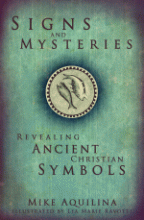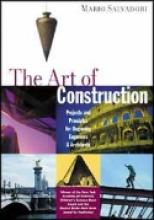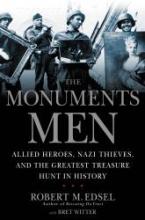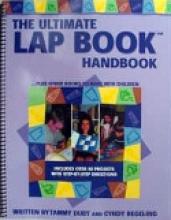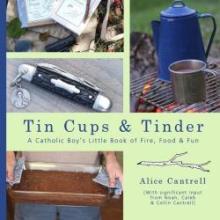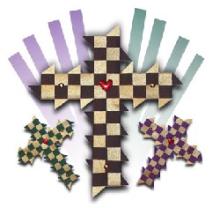Art
Saint Symbol Stickers from Illuminated Ink
Signs and Mysteries
These symbols are, in one sense, quite ordinary; they are commonplace items from everyday life in the ancient world. And so we might take them for granted, overlook them. But they're there for a reason ... When we see these signs, how can we help sensing we have received an urgent message, telegraphic, cryptic, from a distant family member?If it would be an injustice to merely talk about the symbols without illustrating them, it would be an equal injustice to focus only on the visuals. Signs and Mysteries takes us on a pilgrimage of sorts, delivering those urgent messages from our ancient brothers and sisters in Christ, because, as the author tells us of these symbols:
The first Christians traced those lines because they wanted them to stand forever as a perpetual prayer, for remembrance of the dead, for the perseverance of the living, and for deliverance in times of trial.Exploring these ancient (but still relevant) symbols is far more than an archaeological exercise. Signs and Mysteries may be a fascinating read and a valuable reference, as well as a visual feast, but it is also about connections to our Christian family. It is a personal book in the best sense of the word -- a book that connects us, through a shared and vital language, to the person of Jesus Christ.
The Art of Construction
Reading Level: Ages 9-12
The Art of Construction (originally published in 1979 under the title Building: The Fight Against Gravity) is one of the finest examples of books that help children understand principles of science as applied to real life situations - in particular buildings and making sure that they stay up in spite of gravity and natural disasters.
Children are introduced to important concepts like "tension" and "compression" with simple hands on exercises to help understand and remember them. Most chapters include a somewhat-more-involved construction project to teach these principles (and have a lot of fun in the process). Numerous illustrations make concepts and clearer and aid in understanding the building projects.
The text is very engaging and easy-to-understand. We've found it ideal as a read-aloud with a group. Our co-op has been using it somewhere in the 2nd to 4th grade range, although it could certainly used by much older students (all the way through high school would be reasonable). The engineer dads in our co-op have been very impressed with the book and the concepts the children study.
The chapter titles are as follows (and give you a little glimpse of the content and style):
- From Cave to Skyscraper
- Building a Tent
- What is a Beam?
- What do We Build Structures With?
- The Floor of Your Room
- A Steel Frame...Made Out of Paper
- The Part of the Building You Don't See
- What Tornadoes, Earthquakes and Changes in Temperature Can Do
- How to Fight Tornadoes and Earthquakes
- Ropes and Cables
- Sticks and Stones
- Strings and Sticks
- Shape and Strength
- Barrels, Dishes, Butterflies, Bicycles Wheels and Eggs
- Balloons...and Back to the Tent
"If you had one of your friends put your hands on each other's shoulders and move your feet away from each other, you will become a full arch and feel compressed by each other's weight. But if your shoes slip on the floor and you begin to slide apart, the arch will collapse. Its ends must be firmly anchored to prevent it from spreading apart." (pg. 15)
"The best way to understand how the frame of a building works is to build one. A good model of a steel frame can be built with paper, provided we first build the separate elements of the frame: the columns, the beams, and the floors. A column should not take too much floor room, but must be strong enough to carry the compressive loads without buckling under them. A column buckles, that is, bends under compression along its axis, if it is too thin. Take a plastic ruler, stand it up, and push downward on it: there comes a point when the ruler will bend out." (page 39)
"The purpose of a building's structure is to guarantee that the building will stand up under all the loads and forces acting on it: the weights, the pressure of the wind, the forces due to temperature changes, and, possibly, the shaking caused by earthquakes. The builders want to make sure that the building will not collapse, and they hope it will not even be damaged, since in the first case it may kill people and in the second it may be costly to repair. They also want to make sure that the building will not move around. If a house were to slide down the slope of the hill it is built on, or if a skyscraper were to be toppled by the wind, the buildings would have failed their purpose, even if their structures might sometimes ed up undamaged." (page 57)
This is one of the books that I want to be sure each of my children have a chance to study sometime during their school years. Highly recommended!
The Monuments Men
The Ultimate Lap Book Handbook...Plus Other Books to Make with Children
When it comes to craft projects, I am all thumbs. If I must struggle with following incomprehensible directions and managing difficult techniques, I prefer to end up with something delicious to eat. You can imagine my fear when I was first introduced to lap books–-described by the author of the Ultimate Lap Book Handbook as "a file folder folded a funny way, and then filled with child-produced booklets". As I read through this book, my fear turned to fascination. This was one incredible project that even I could handle!
The authors begin with a very convincing ten-reason list of paragraphs describing why and how the making of books is beneficial to a student of any age. They continue with a section on Lap Books, including the basic ways of folding the folder and the booklets that go inside. Construction, assembly, and layout techniques are also discussed, and cover designs and FAQs are described. The next section is titled "Beyond Lap Books" and contains the instructions for making simple books, stick books, pizza books, hardcover books, and more. Are you getting overwhelmed yet? Don't! This is where most "how-to" books end, expecting you to be able to apply these ideas to your own homeschool. The Ultimate Lap Book Handbook is just getting to the best part.
The heart of the book is the Book Blueprints section. The authors proceed through Bible, History, Literature. Math (Yes! Even Math!), Science, and Social Studies, and they offer step-by-step directions for more than fifty projects at all grade levels. Will your 3rd-8th grade student be studying the Ten Commandments? Does your high schooler need a Math Formula Flip Book? Would your K-4th grader enjoy making a Weather book? The well-illustrated project directions provide no-fail projects for the craft-challenged as well as a comprehensive range of starter ideas for experienced "Fun Moms". Many black-and-white photographs of finished projects are also included. Each project description includes Writing Prep and Presentation sections in addition to any helpful tips. More advanced projects also include a list of materials, suggested booklets for the inside, assembly directions, and evaluation guidelines. These techniques can be used with any homeschooling method from strictly classical to unit study to textbooks. They can be used with just one child or a CCD class or a Scout group. I can't wait to get started making our next book!


